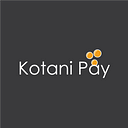The Ecology of Celo Coins
A stablecoin is a crypto asset that has price stability in the short and medium-term, enabling it to be used as a store of value and a reliable medium of exchange. Prime characteristics of a stablecoin that has global acceptance is one that is free of the fiat-monetary system, and digital in its nature, including within it privacy, price stability, scalability, and decentralization. To serve the unbanked population, this currency needs the additional characteristics of simplicity of use, freedom from data constraints, and flexibility for the demographic it serves.
The Celo protocol possesses these qualities and offers a promise of a global fiat-free, digital cash. Most fiat-based stablecoins including Libra, and Tether, require a centralized entity to hold the collateral that backs the token. However, Celo’s stability algorithm (CP-DOTO) is a decentralized version of the one-to-one token issuance mechanism of most fiat-based stablecoins. This means that Celo does not require a centralized intermediary to offer the stability of its currency, the Celo Dollar. Additionally, widely-accessible cryptocurrencies such as Bitcoin and Ethereum pose great barriers to average-day users around the world because of complexity and data constraints. Celo’s ultra-light client approach enables users to access its global monetary network even from a GSM phone.
Celo has planned to have many stablecoins. In this article, we imagine the possibilities and look at current implementations.
Stablecoins around Lending Services
According to the International Finance Corporation, 65 million enterprises, or 40 percent of formal micro, small and medium businesses in developing countries, have an unmet financing need of $5.2 trillion every year. Through stablecoins, such businesses can receive loans from other users around the world on a peer-to-peer lending platform or from pooled lending platforms. A stablecoin business model can be built around lending to MSMEs. Businesses have more to protect as opposed to individuals. Having a reputation system on the platform based on repayment behaviour creates a credit score for the business. With a system like this, one can see how businesses in Columbia, Bangladesh, and Nigeria, can be incorporated into a new financial system.
Stablecoins around Loyalty Programs
Most businesses are interested in profits and sustainability, with each entrepreneur attempting to secure the going concern of their business. Businesses therefore provide jobs to community members, opportunities to entrepreneurs to pursue their own paths, and in the long run, support community initiatives such as the construction of schools and hospitals. By ensuring the prosperity and survival of a business, the prosperity of individuals and entire communities is preserved. By tying the goals of the business to the goals of the community, businesses become community value creators rather than value extractors. One can imagine a business that rewards its customers with a cash back in stablecoins for a percentage of their purchase. Customers can then use the stablecoins to pay for a percentage of new purchases at the shop or contribute their stablecoins to an online community that contributes to environmental preservation within that community. These stablecoins can only be used within the community to build community businesses and promote community initiatives. Such a model provides incentive to the businesses to practise sustainable business while keeping their customers, and enables environmental and ecological sustainability at the same time.
Gig stablecoins
Blockchains are effective incentivization machines. It is possible to build a community around any initiative as long as incentives are properly aligned. Incentive refers to an individual’s reason for acting towards a particular goal. Blockchains align incentive towards common good by offering consistent monetary rewards and psychological achievement that comes from the realization of goals. Through stablecoins, network participnts around the world can be incentivized to contribute to the inception and growth of various projects. Communities can be built around values that serve them and can incentivize a global workforce of freelancers and community members who complete various tasks. The combination of a stablecoin and a decentralized autonomous community model could lead to powerful incentivization effects. The Celo platform uses such a model in rewarding its community of contributors.
Conclusion
The taxonomy of money shows that local currencies are peer-to-peer currencies with the potential of being digitized.
Cryptocurrencies have the properties of being widely accessible, peer-to-peer, and digitized forms of money. When the concept of local currencies meets the concept of cryptocurrencies, social currencies are born, many of them requiring the stability characteristics to become a store of value, medium of exchange and a unit of account. Many social currencies are now using blockchain technology and stability protocols to support the societies. If you find social currencies to be interesting and would like to build one on Celo, Grassroots Economics would be a great place to start. Will Rudick and Grassroots Economics support communities in informal settlements in Kenya to build currencies.These currencies allow people to exchange goods and services and incubate new businesses, without relying on scarce national currency and volatile markets.
Are you a FinTech that needs an off-ramp in Africa? Sign up here to integrate with Kotani Pay.
